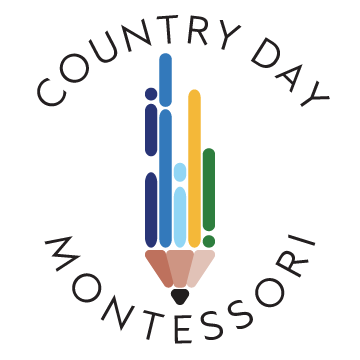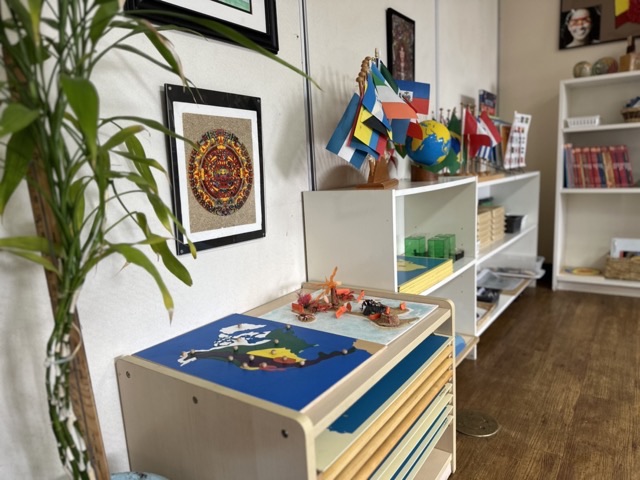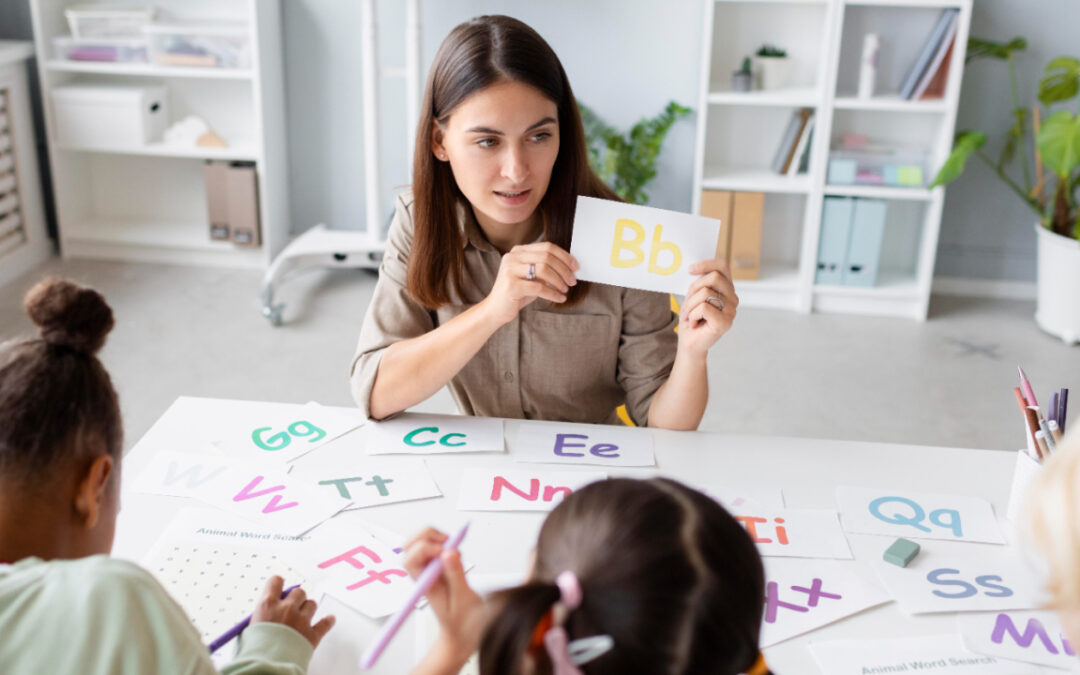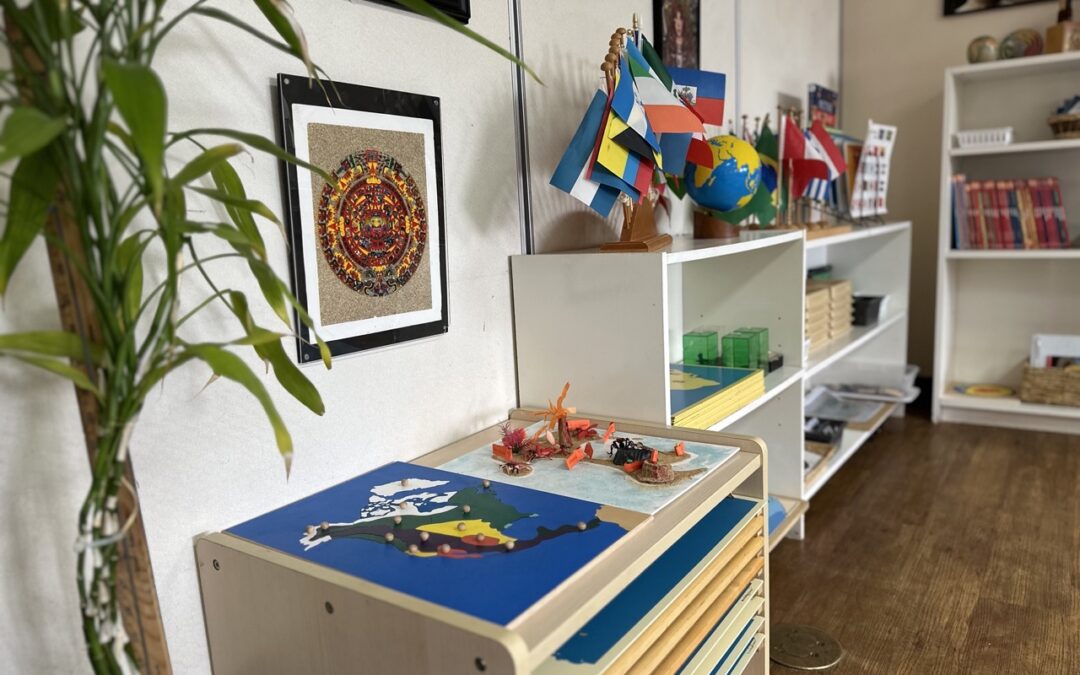Are you looking to bring the Montessori method into your home? Implementing the Montessori approach at home can enhance your child’s learning and development. This guide will cover how to set up a Montessori environment, suggest age-appropriate activities, and provide daily tips for success.
By following these strategies from a San Antonio Montessori School, you’ll create a supportive learning space that fosters independence and curiosity in your child, right in your own home.
How Can You Implement the Montessori Method at Home?
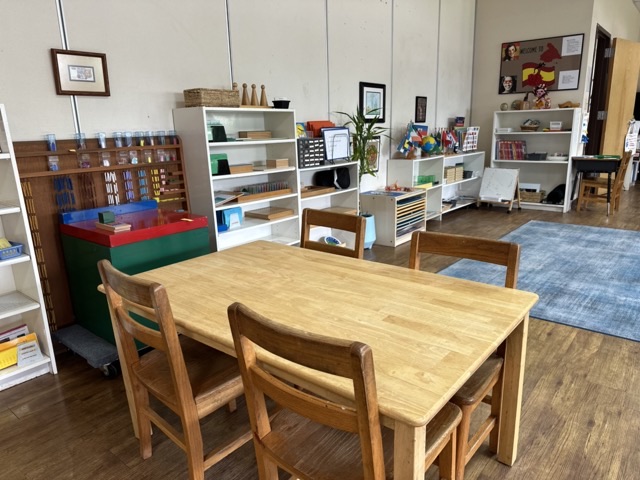
Implementing the Montessori method at home involves organizing the space and choosing appropriate materials. These steps create an environment that fosters independence and learning.
Parents can apply behavior analysis techniques to manage their child’s development patiently. This approach supports the child’s growth within the family and community.
Organize the Space
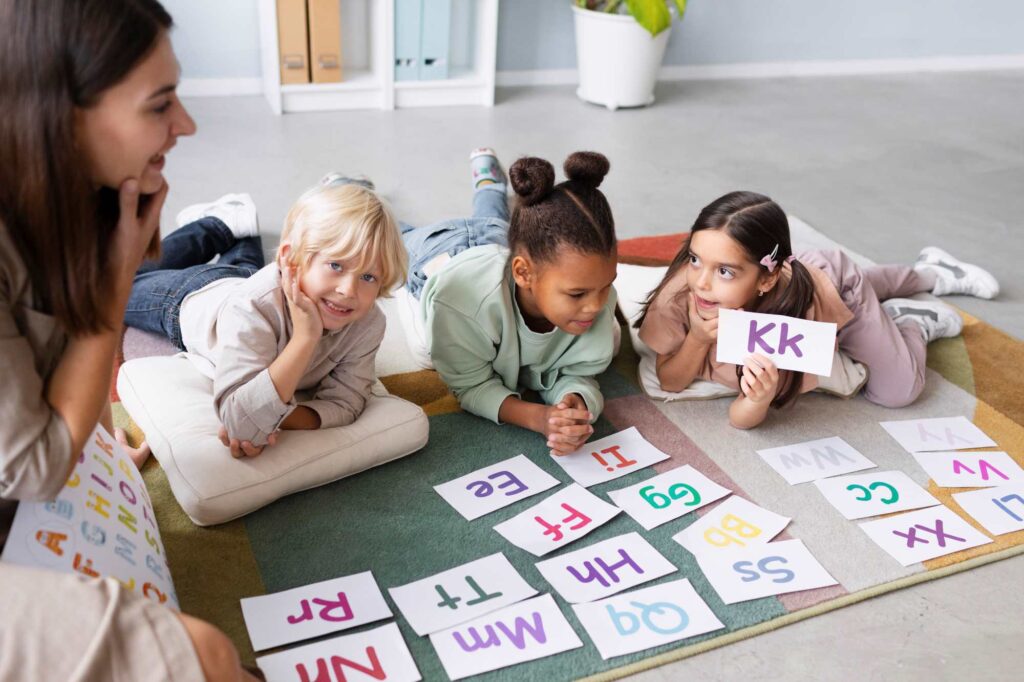
- Create designated areas for different activities (e.g., reading nook, practical life skills station).
- Ensure materials are accessible and at the child’s eye level.
- Use child-sized furniture and tools to promote independence.
- Keep the environment simple and ordered to encourage exploration.
- The environment should be orderly, pleasant, clean, and safe for children
This setup promotes independence through practical life activities including hand washing, personal care, flower arranging, simple food preparation, and cleaning and organizing.
Choose the Right Materials
Rather than having many toys, focus on a few good quality materials offering a range of experiences. The most common misconception is that Montessori is about the materials or stuff – it’s actually about the child.
- Focus on materials encouraging hands-on engagement, like practical life tools and sensory items.
- Select items based on the child’s developmental stage and interests.
- Arrange materials systematically for easy access and to foster order.
- Materials should be organized into clear boxes or baskets by subject or type and rotated based on carefully observing the child’s interests and engagement levels.
Organizing the space and selecting the right materials will create an environment that encourages independence and self-directed learning.
How to Set Up a Montessori Environment at Home
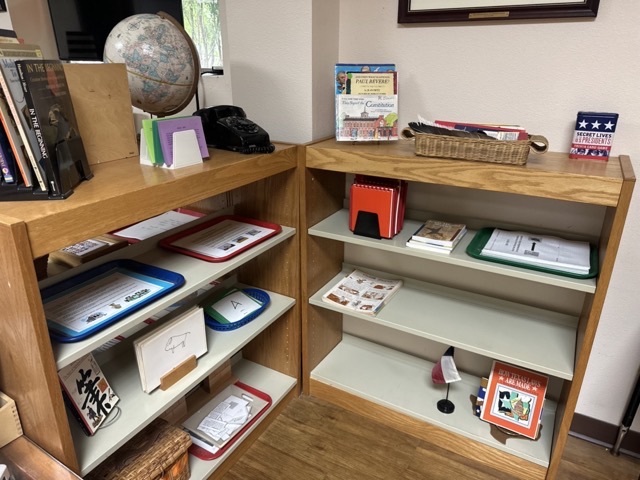
Setting up a Montessori environment at home requires thoughtful planning and organization. Parents can create spaces that foster independence and learning by incorporating child-sized furniture and accessible materials. This approach aligns with innovative educational philosophy.
The home setup should include designated areas for different activities, such as practical life skills, sensory exploration, and academic learning. Utilizing technology resources can enhance the learning experience, providing interactive tools that complement traditional Montessori materials. This integration of technology reflects the evolving nature of education in modern clinics and schools.
Parents should focus on creating an orderly and clutter-free environment that allows children to concentrate and develop their skills. Organizing materials on low shelves and using labels can help children independently access and return items. This system promotes responsibility and supports the development of executive functioning skills, which are crucial for success in university settings.
Implementing a Montessori environment at home involves continuous assessment and adaptation. Parents can observe their child’s interests and adjust the setup accordingly, introducing new challenges and materials as needed. This approach mirrors the innovative practices used in educational clinics, where resources are tailored to individual learning needs.
The key steps for setting up a Montessori environment at home include:
- Designate specific areas for different activities
- Choose child-sized furniture and accessible storage
- Incorporate a mix of traditional and technology-based learning materials
- Maintain an orderly and clutter-free space
- Regularly assess and adapt the environment based on the child’s needs
Montessori Activities at Home with Toddlers and Preschoolers
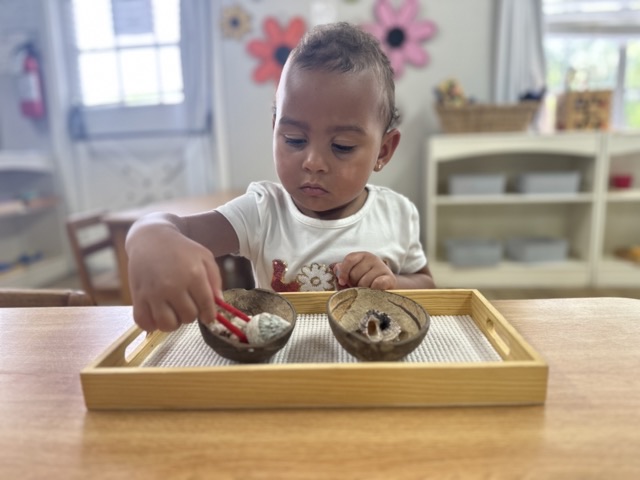
The Montessori method focuses on developing independence, concentration, and a sense of responsibility through practical life activities that help children learn to care for themselves, and their environment, and interact with others.
Practical Life Skills
Practical life skills are key for toddlers and preschoolers in Montessori learning at home. Activities like pouring, buttoning, and sorting help children build fine motor skills, focus, and independence, laying a strong foundation for future learning and growth.
Caregivers can include these skills in daily tasks, teaching responsibility and self-reliance. These simple, hands-on experiences prepare children to contribute positively to their families and communities as they grow. Here are some ideas to teach practical life skills at home:
Care of Self
- Hand washing and personal hygiene
- Dressing (using zippers, buttons, velcro)
- Feeding with utensils
- Brushing teeth and hair
- Toileting and cleaning up
Care of Environment
- Wiping tables and surfaces
- Sweeping and mopping
- Arranging flowers in vases
- Loading/unloading dishwasher
- Folding and sorting laundry
Kitchen Activities
- Preparing simple snacks
- Peeling bananas and fruits
- Making orange juice
- Pouring drinks
- Setting the table
Learning Activities
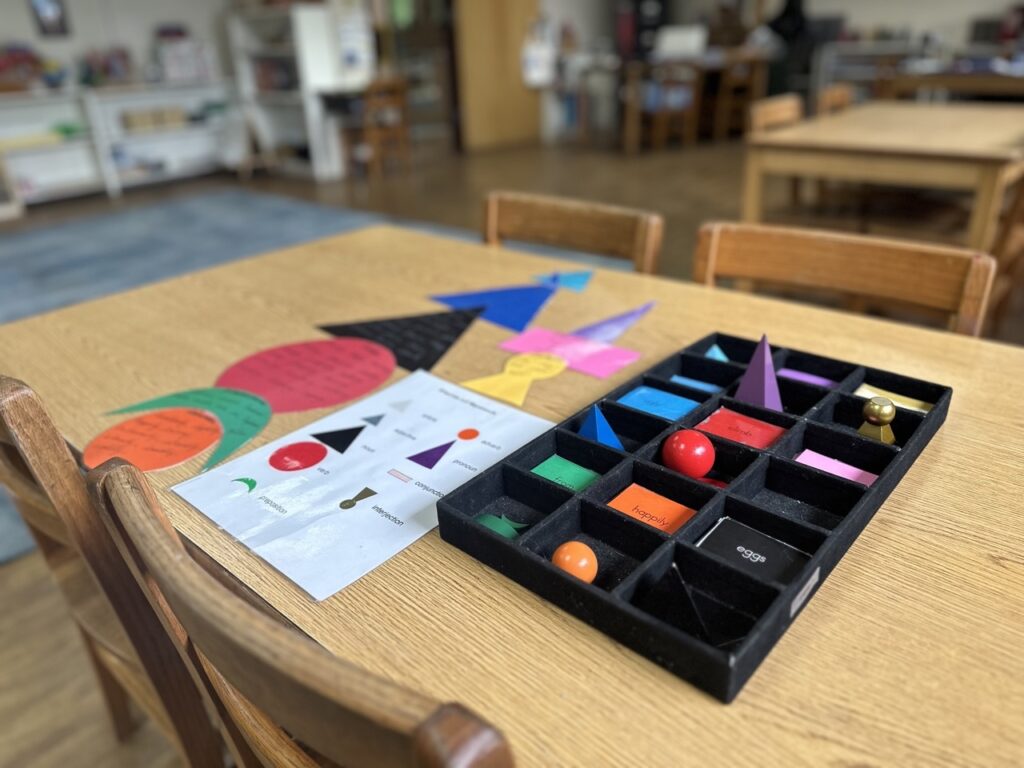
Montessori learning activities focus on hands-on experiences that promote cognitive growth and independence. Simple tasks like sorting objects by color or shape help children develop fine motor skills and learn basic organization. These activities build a strong foundation for future learning.
Parents can also use everyday objects for simple math exercises, teaching counting and problem-solving. Clear instructions and a structured environment ensure children feel secure and supported while they learn. Here are some ideas to teach these at home:
Fine Motor Development
- Pouring activities with water or dry materials
- Threading and unthreading activities
- Opening and closing containers
- Transferring objects using tongs or spoons
Sensory Exploration
- Sand play
- Water activities
- Sorting by color, shape, or size
- Exploring different textures
Cognitive Development
- Simple puzzles
- Matching activities
- Object permanence games
- Color sorting exercises
Movement Activities
- Walking on a line
- Carrying objects on trays
- Climbing and outdoor play
- Dancing to music
Remember to keep materials at your child’s height, making them easily accessible and encouraging independence. Allow your child to choose activities, fostering self-direction and personal interest in learning.
Provide ample time for repetition and mastery, helping them build confidence and a deeper understanding of each task. To maintain engagement, rotate activities based on their interests, ensuring the environment stays fresh and stimulating while avoiding overwhelm.
Montessori Education at Home for Different Ages
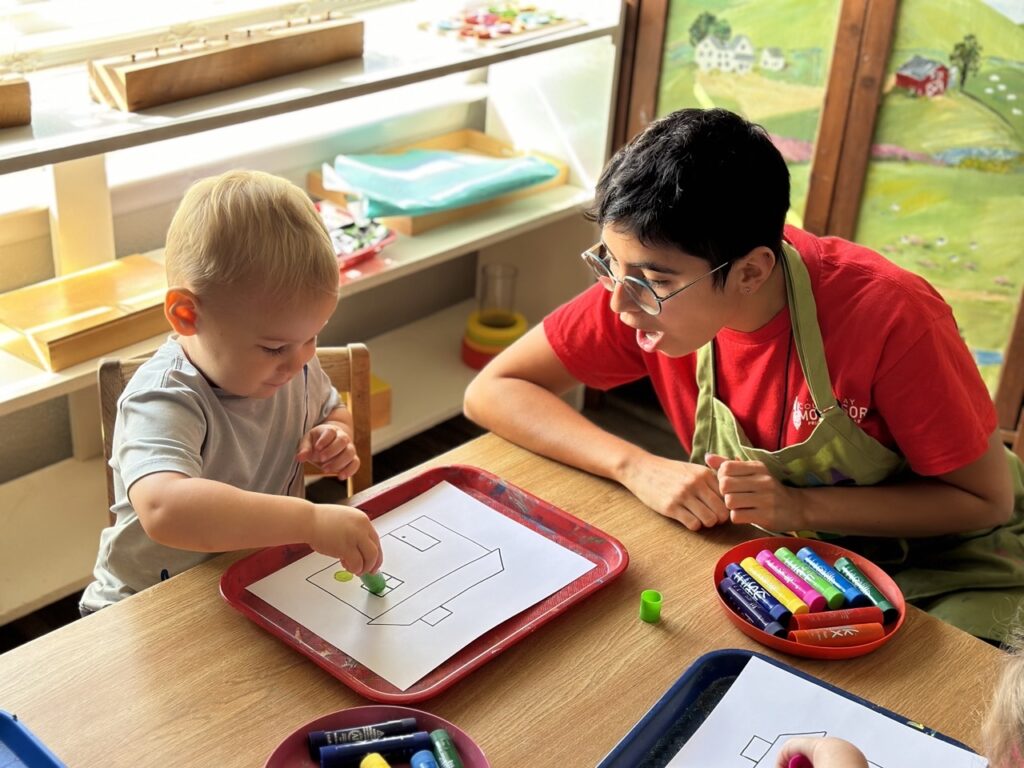
Montessori education begins at birth, recognizing that the first three years of life are the most fundamental in developing human potential, personality, social skills, and human values.
Infants (0-3 years old)
Montessori education for infants focuses on creating a safe, stimulating environment that encourages exploration and sensory development. The most important “toy” for a newborn is the parent – making eye contact and talking is one of the most enriching activities.
Freedom of movement is essential, which means limiting the use of baby containers like swings and bouncers, and instead providing more floor time for exploration.
Brain development is activity-dependent, so everything a child touches, tastes, sees, hears, and smells impacts the brain’s circuitry. The environment directly influences brain structure. Key elements of Montessori education for infants include:
Providing a safe, child-proofed space for exploration
- Offering age-appropriate materials that stimulate the senses
- Encouraging independent movement and exploration
- Supporting language development through clear communication
- Respecting the infant’s natural rhythms and preferences
Primary (3-6 years old)
The primary stage (3-6 years) is considered the core of the Montessori approach to education. During this period, children are naturally curious about everything and need to explore and discover. Parents can create a prepared environment at home with materials that support practical life skills, sensorial exploration, language development, and early mathematics.
The environment should be designed to encourage each child to move, touch, and manipulate materials, with the freedom to work independently under gentle and respectful guidance. Activities should include both indoor and outdoor spaces with learning materials, books, plants, art and music materials, and nature activities.
In San Antonio, families can access support through several established Montessori schools that offer parent education programs and guidance for implementing Montessori principles at home. The Montessori School of San Antonio (MSSA) provides community support and educational resources on their 24-acre campus
Daily Tips for Montessori at Home
1. Establish a Routine
Create a consistent daily routine with time for independent work, practical life activities, and outdoor play. This structure fosters time management skills and provides a sense of security.
2. Prepare the Environment
Organize materials on low shelves to ensure they are within the child’s reach. Rotate items based on your child’s interests and developmental stage to keep the space engaging and stimulating.
3. Encourage Independence
Allow children to make age-appropriate choices and complete tasks on their own. This builds confidence, problem-solving abilities, and a sense of accomplishment.
4. Observe and Adapt
Take time to observe your child’s interests and behaviors. Use these observations to guide learning activities and tailor the environment to support their growth and development.
Homeschooling vs Montessori Education
With the newly elected President Trump’s proposal to provide $10,000 per family for homeschooling, many parents are considering this option. But what if homeschooling isn’t feasible for your family? For those who can’t homeschool, Montessori education offers an excellent alternative that mirrors many of the benefits homeschooling provides while offering additional advantages unique to its approach.
The Advantages of Montessori Education
Montessori schools promote independence, self-motivation, and a love for learning, similar to homeschooling. The method focuses on individualized, hands-on learning that adapts to each child’s pace and interests.
- Individualized Learning: Montessori classrooms allow children to progress at their own pace, ensuring mastery of concepts. This personalized approach builds confidence and deep understanding, like one-on-one homeschooling.
- Emphasis on Practical Life Skills: Montessori education teaches essential skills such as problem-solving and time management, preparing children for real-world challenges, much like hands-on homeschooling experiences.
- Social Interaction and Community: Montessori schools offer multi-age classrooms where children build strong social and communication skills, addressing the social interaction challenges of homeschooling.
- Access to Expert Educators: Montessori teachers guide learning based on each child’s needs, providing high-quality education and peace of mind for parents.
Why Montessori is a Worthwhile Investment?
While the $10,000 homeschooling proposal is attractive, many parents may find Montessori education to be a more practical and effective choice. Montessori schools provide:
- Structured learning environments that promote independence
- Access to carefully curated materials and resources
- Opportunities for children to collaborate and build social skills
- Professional guidance from trained educators
For families unable to homeschool, Montessori education bridges the gap, delivering a holistic, child-focused learning experience that supports academic and personal growth.
See the Difference – Schedule a Personalized Tour Today!
Experience the unique learning environment at Country Day Montessori, where children grow through hands-on learning and independence. Our 4.5-acre campus features barnyard animals, a butterfly greenhouse, and authentic Montessori classrooms for children from infancy to elementary. Some of our students came from Fort Sam Houston near Salado Creek Park.
With small group instruction and personalized learning plans, we inspire curiosity and a love of learning. Meet our caring teachers and see our classrooms at 4194 Jung Rd, San Antonio, TX 78247. Book a tour today and discover the Country Day difference!
Frequently Asked Questions
What are some age-appropriate Montessori activities for toddlers and preschoolers?
Montessori activities for toddlers and preschoolers focus on developing independence and sensory exploration. These include practical life tasks like pouring and sorting, sensorial exercises with shape sorters and color matching, and early literacy activities such as tracing sandpaper letters and exploring sound cylinders.
How do I adapt Montessori principles for different age groups at home?
Adapting Montessori principles at home involves creating age-appropriate environments that foster independence and learning. For infants, provide safe spaces for exploration. For toddlers, offer practical life activities. For preschoolers, introduce sensorial materials. For older children, focus on self-directed learning and project-based activities.
What are the key benefits of implementing Montessori methods at home?
Implementing Montessori methods at home fosters independence, self-discipline, and critical thinking skills in children. It encourages hands-on learning, promotes a structured environment, and supports each child's unique developmental pace. This approach enhances problem-solving abilities and cultivates a lifelong love for learning.
Can you provide daily tips for maintaining a Montessori approach at home?
Maintain a Montessori approach at home by creating child-sized spaces, promoting independence, and offering choices. Organize materials on low shelves, use natural items for learning, and involve children in daily tasks. Encourage exploration, respect their pace, and model desired behaviors consistently.
